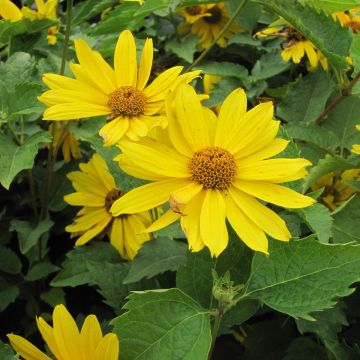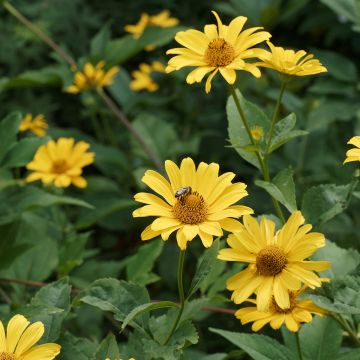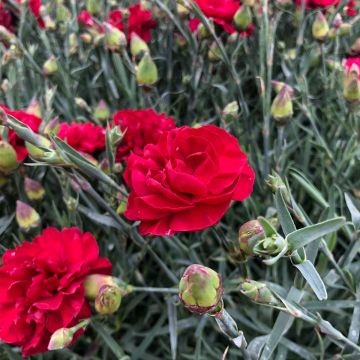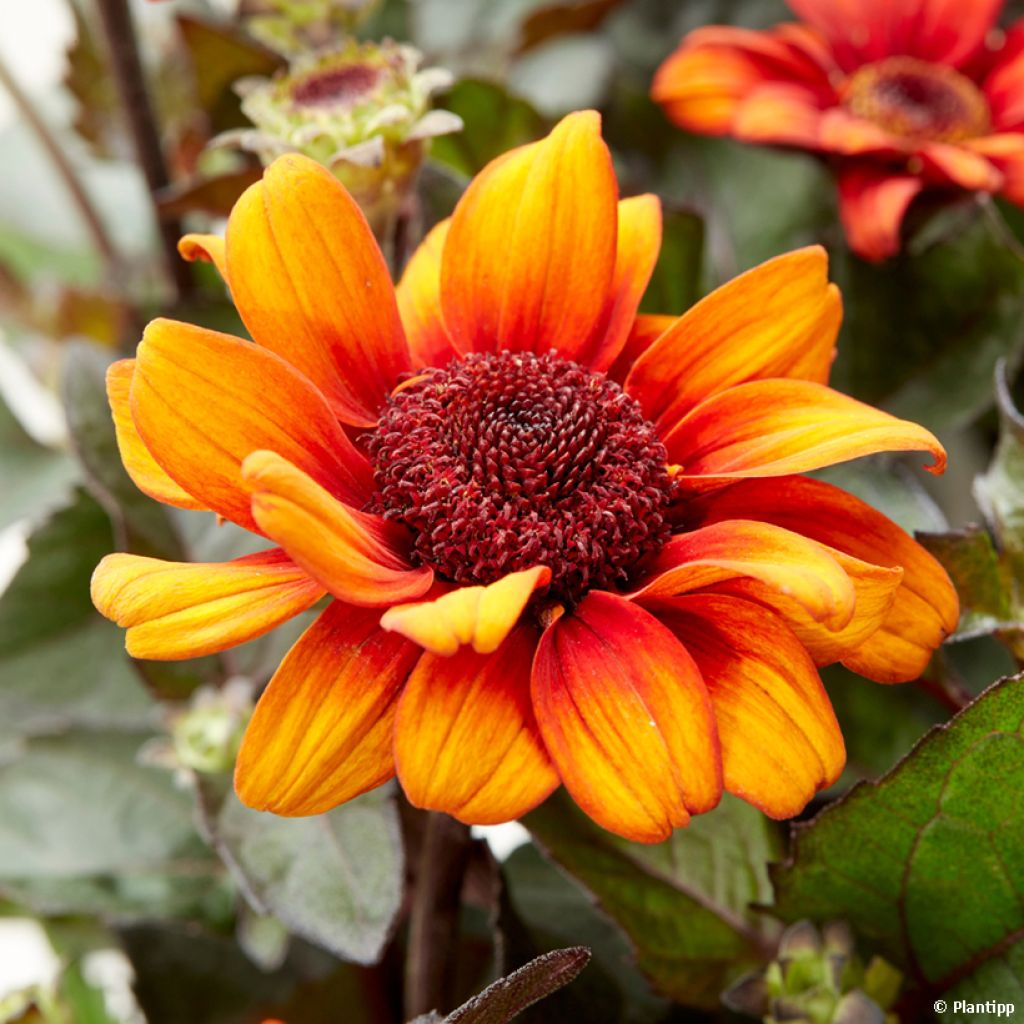

Heliopsis Luna Roja - Héliopsis faux hélianthe
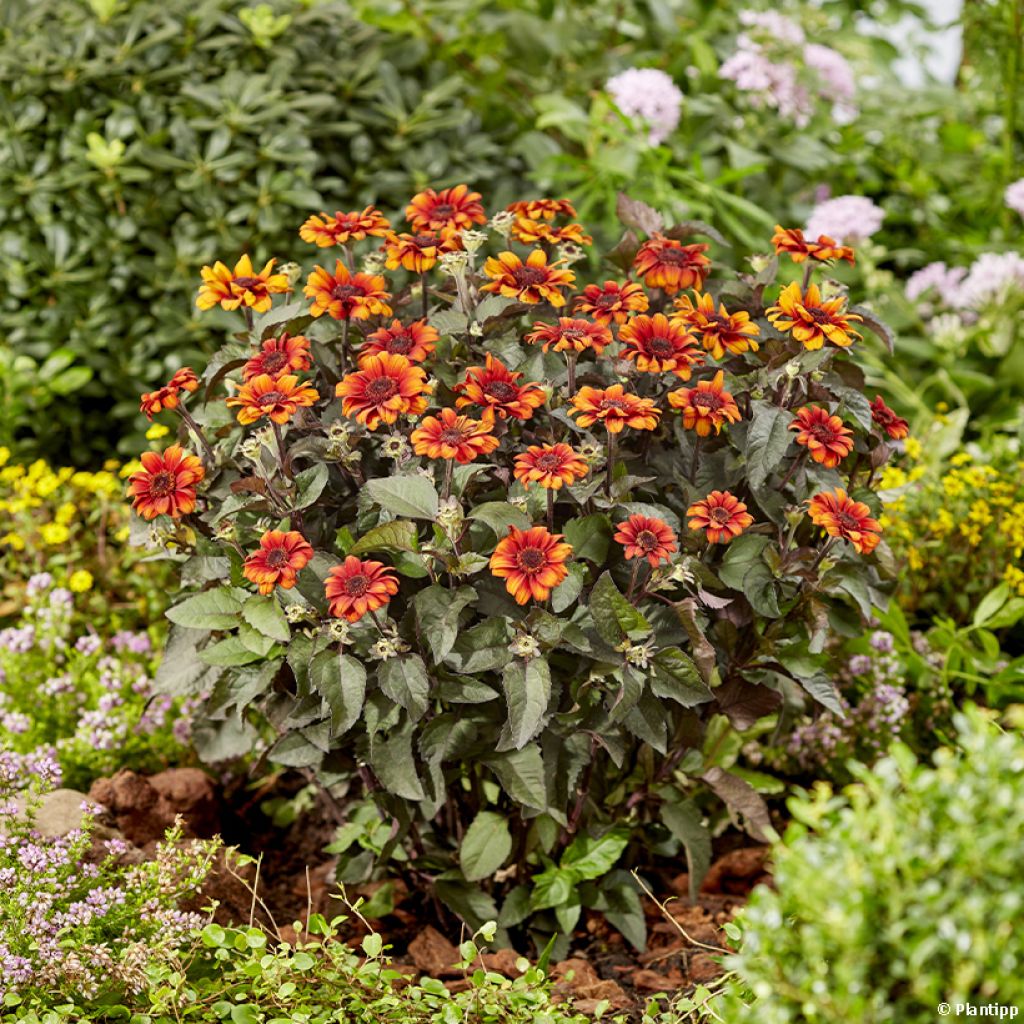

Heliopsis Luna Roja - Héliopsis faux hélianthe
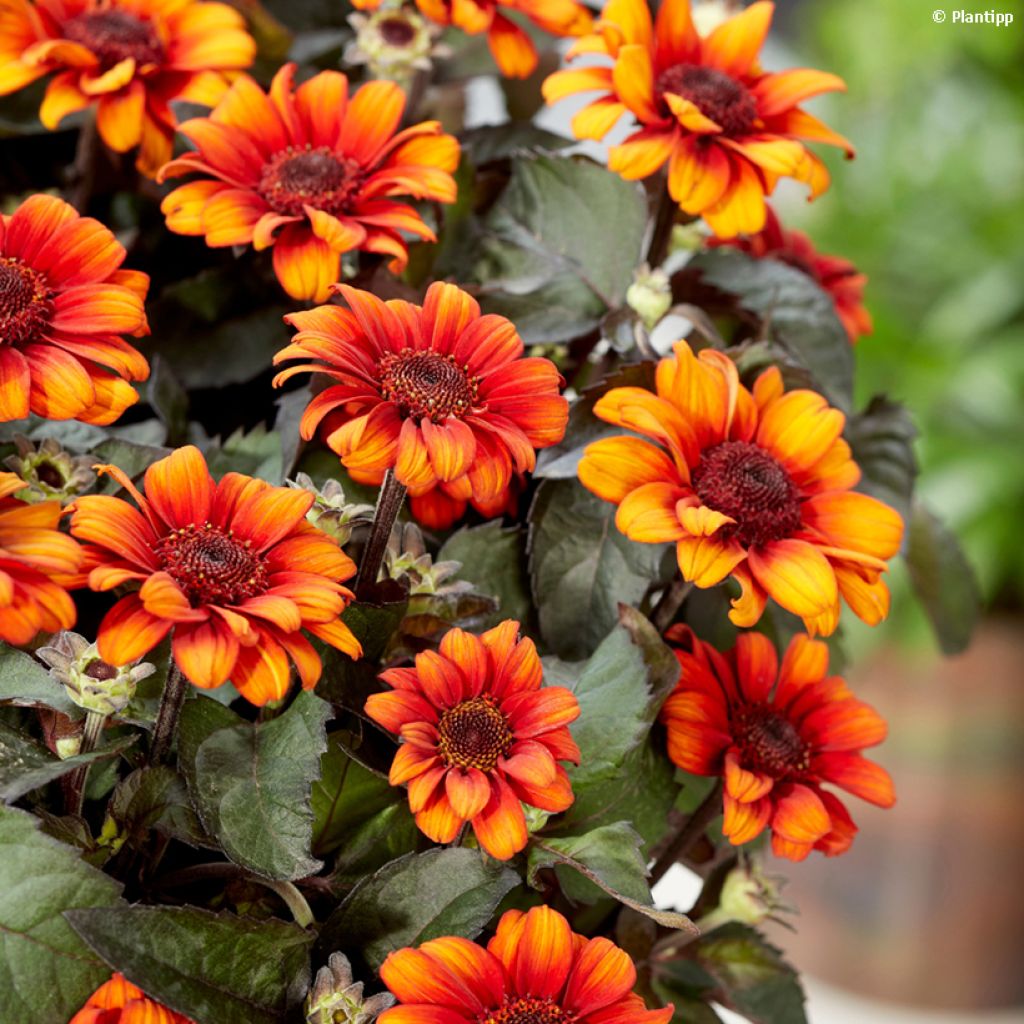

Heliopsis Luna Roja - Héliopsis faux hélianthe


Heliopsis Luna Roja - Héliopsis faux hélianthe
Heliopsis helianthoides Luna Roja
Heliopsis helianthoides Luna Roja
Oxeye sunflower, False sunflower, Smooth oxeye, Rough oxeye
This item cannot be shipped to the selected country
Delivery charge from €5.90
More information
Schedule delivery date,
and select date in basket
This plant carries a 12 months recovery warranty
More information
We guarantee the quality of our plants for a full growing cycle, and will replace at our expense any plant that fails to recover under normal climatic and planting conditions.
From €5.90 for pickup delivery and €6.90 for home delivery
Express home delivery from €8.90.

Does this plant fit my garden?
Set up your Plantfit profile →
Description
Heliopsis 'Luna Roja' is a variety of false sunflower that is characterized by a compact habit, abundant and prolonged flowering, sturdy stems, and very dark foliage. Its beautiful red-orange daisy-like flowers with a red centre create an incredibly colourful bouquet for many weeks. This excellent perennial plant, closely related to Helianthus, the famous sunflower, deserves to be planted for its many qualities: it is an undemanding, hardy, and vigorous plant that attracts bees and butterflies. Its radiant simplicity makes it suitable for meadow compositions, both in the ground and in pots, and its flowers are long-lasting in a vase.
Heliopsis helianthoides var. scabra 'Luna Roja' belongs to the Asteraceae family and is a very recent Dutch horticultural selection. Its wild ancestor, the false sunflower, is native to North America, where it is usually found in open woodlands and tall grass prairies, less frequently along roadsides. It is a very hardy and self-sufficient plant.
The 'Luna Roja' cultivar is a woody-based perennial plant that does not spread or become invasive. It forms a well-branched clump with numerous sturdy stems, reaching a height of no more than 45cm (18in) and a width of 40cm (16in). Its growth rate is moderate to fast. Flowering occurs from July to October in moderate climates. The brownish flower heads appear at the tips of branched stems. Each flower, or floret, consists of ligulate orange flowers tinged with red at the base (these are the 'petals') and tiny fertile florets ranging in colour from red to brown, arranged on the central disk. The foliage extends up to the top of the stems and is very dark green, more or less purplish, rough, with lanceolate and dentate leaves that are somewhat triangular. The above-ground, deciduous vegetation dies in winter and regrows in spring.
Trends can be quite closed-minded, as the upright habit, long flowering period, and low requirements of Heliopsis should make them welcome in all gardens... but no! However, all specialists agree that they are excellent perennial plants. 25 years ago, Alan Bloom, a famous perennial plant breeder in England, said: "These are certainly the last plants I would get rid of if I decided to eliminate the yellow colour from the borders of my garden." Combine Heliopsis 'Luna Roja' with other easy perennials such as mulleins, Argentinian vervain, tansies, Heleniums, Agastaches, etc.
Report an error about the product description
Flowering
Foliage
Plant habit
Botanical data
Heliopsis
helianthoides
Luna Roja
Asteraceae
Oxeye sunflower, False sunflower, Smooth oxeye, Rough oxeye
Cultivar or hybrid
Other Heliopsis
Planting and care
Heliopsis 'Luna Roja' plants are easy to grow. They adapt to any well-drained soil and only fear excessive winter moisture and overly dry summer soils. However, they tolerate clayey, limestone, fairly poor, and occasionally dry soils. Heliopsis helianthoides 'Luna Roja' prefers a very sunny exposure. It is best to avoid strong winds. It is advisable to remove faded flowers to promote regrowth. The plant can be divided every 2 to 3 years to maintain its vigour. You can also cut back the plant by half in early June to promote the solidity of the clump. Note that certain varieties of Heliopsis are sensitive to powdery mildew and rust when the growing conditions are not optimal.
Planting period
Intended location
Care
-
, onOrder confirmed
Reply from on Promesse de fleurs
Summer flowering perennials
Haven't found what you were looking for?
Hardiness is the lowest winter temperature a plant can endure without suffering serious damage or even dying. However, hardiness is affected by location (a sheltered area, such as a patio), protection (winter cover) and soil type (hardiness is improved by well-drained soil).

Photo Sharing Terms & Conditions
In order to encourage gardeners to interact and share their experiences, Promesse de fleurs offers various media enabling content to be uploaded onto its Site - in particular via the ‘Photo sharing’ module.
The User agrees to refrain from:
- Posting any content that is illegal, prejudicial, insulting, racist, inciteful to hatred, revisionist, contrary to public decency, that infringes on privacy or on the privacy rights of third parties, in particular the publicity rights of persons and goods, intellectual property rights, or the right to privacy.
- Submitting content on behalf of a third party;
- Impersonate the identity of a third party and/or publish any personal information about a third party;
In general, the User undertakes to refrain from any unethical behaviour.
All Content (in particular text, comments, files, images, photos, videos, creative works, etc.), which may be subject to property or intellectual property rights, image or other private rights, shall remain the property of the User, subject to the limited rights granted by the terms of the licence granted by Promesse de fleurs as stated below. Users are at liberty to publish or not to publish such Content on the Site, notably via the ‘Photo Sharing’ facility, and accept that this Content shall be made public and freely accessible, notably on the Internet.
Users further acknowledge, undertake to have ,and guarantee that they hold all necessary rights and permissions to publish such material on the Site, in particular with regard to the legislation in force pertaining to any privacy, property, intellectual property, image, or contractual rights, or rights of any other nature. By publishing such Content on the Site, Users acknowledge accepting full liability as publishers of the Content within the meaning of the law, and grant Promesse de fleurs, free of charge, an inclusive, worldwide licence for the said Content for the entire duration of its publication, including all reproduction, representation, up/downloading, displaying, performing, transmission, and storage rights.
Users also grant permission for their name to be linked to the Content and accept that this link may not always be made available.
By engaging in posting material, Users consent to their Content becoming automatically accessible on the Internet, in particular on other sites and/or blogs and/or web pages of the Promesse de fleurs site, including in particular social pages and the Promesse de fleurs catalogue.
Users may secure the removal of entrusted content free of charge by issuing a simple request via our contact form.
The flowering period indicated on our website applies to countries and regions located in USDA zone 8 (France, the United Kingdom, Ireland, the Netherlands, etc.)
It will vary according to where you live:
- In zones 9 to 10 (Italy, Spain, Greece, etc.), flowering will occur about 2 to 4 weeks earlier.
- In zones 6 to 7 (Germany, Poland, Slovenia, and lower mountainous regions), flowering will be delayed by 2 to 3 weeks.
- In zone 5 (Central Europe, Scandinavia), blooming will be delayed by 3 to 5 weeks.
In temperate climates, pruning of spring-flowering shrubs (forsythia, spireas, etc.) should be done just after flowering.
Pruning of summer-flowering shrubs (Indian Lilac, Perovskia, etc.) can be done in winter or spring.
In cold regions as well as with frost-sensitive plants, avoid pruning too early when severe frosts may still occur.
The planting period indicated on our website applies to countries and regions located in USDA zone 8 (France, United Kingdom, Ireland, Netherlands).
It will vary according to where you live:
- In Mediterranean zones (Marseille, Madrid, Milan, etc.), autumn and winter are the best planting periods.
- In continental zones (Strasbourg, Munich, Vienna, etc.), delay planting by 2 to 3 weeks in spring and bring it forward by 2 to 4 weeks in autumn.
- In mountainous regions (the Alps, Pyrenees, Carpathians, etc.), it is best to plant in late spring (May-June) or late summer (August-September).
The harvesting period indicated on our website applies to countries and regions in USDA zone 8 (France, England, Ireland, the Netherlands).
In colder areas (Scandinavia, Poland, Austria...) fruit and vegetable harvests are likely to be delayed by 3-4 weeks.
In warmer areas (Italy, Spain, Greece, etc.), harvesting will probably take place earlier, depending on weather conditions.
The sowing periods indicated on our website apply to countries and regions within USDA Zone 8 (France, UK, Ireland, Netherlands).
In colder areas (Scandinavia, Poland, Austria...), delay any outdoor sowing by 3-4 weeks, or sow under glass.
In warmer climes (Italy, Spain, Greece, etc.), bring outdoor sowing forward by a few weeks.






































